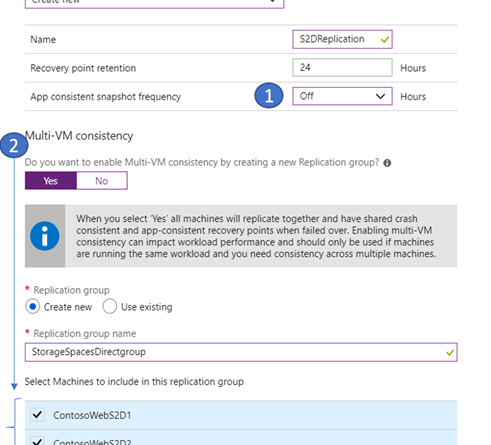Protect Azure Virtual Machines using storage spaces direct with Azure Site Recovery
Storage spaces direct (S2D) lets you host a guest cluster on Microsoft Azure which is especially useful in scenarios where virtual machines (VMs) are hosting a critical application like SQL, Scale out file server, or SAP ASCS. You can learn more about clustering by reading the article, “Deploying laaS VM Guest Clusters in Microsoft Azure.” I am also happy to share that with the latest Azure Site Recovery (ASR) update, you can now protect these business critical applications. The ASR support of storage spaces direct allows you to take your higher availability application and make it more resilient by providing a protection against region level failure.
We continue to deliver on our promise of simplicity and help you can protect your storage spaces direct cluster in three simple steps:
Inside the recovery services vault, select +replicate.
1. Select replication policy with application consistency off. Please note, that only crash consistency support is available.
2. Select all the nodes in the cluster and make them part of a Multi-VM consistency group. To learn more about Multi-VM consistency please visit our documentation, “Common questions: Azure-to-Azure replication.”
3. Lastly, select OK to enable the replication.
Next steps
Begin protecting virtual machines using storage spaces direct. To get started visit our documentation, “Replicate Azure Virtual Machines using storage spaces direct to another Azure region.”
Disaster recovery between Azure regions is available in all Azure regions where ASR is available. Please note, this feature is only available for Azure Virtual Machines’ disaster recovery.
Related links and additional content
- Check the most common queries on Azure Virtual Machine disaster recovery.
- Learn more about the supported configurations for replicating Azure Virtual Machines.
- Need help? Reach out to Azure Site Recovery forum for support.
- Tell us how we can improve Azure Site Recovery by contributing new ideas and voting on existing ones.
Source: Azure Blog Feed

